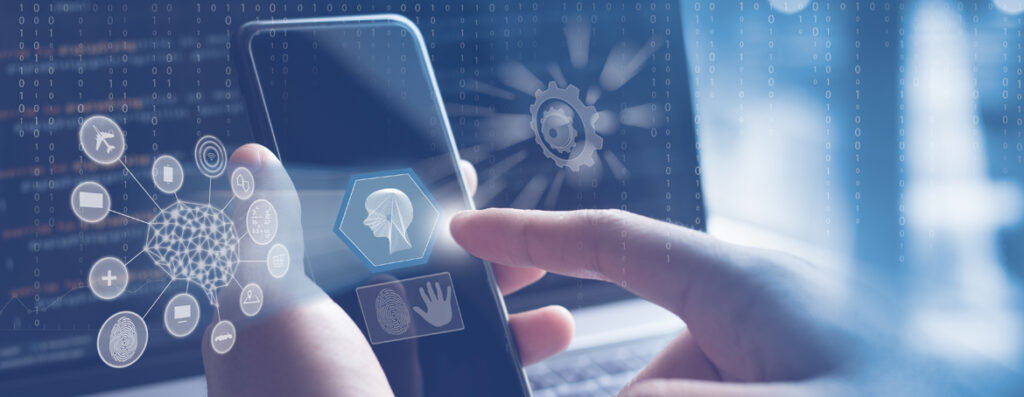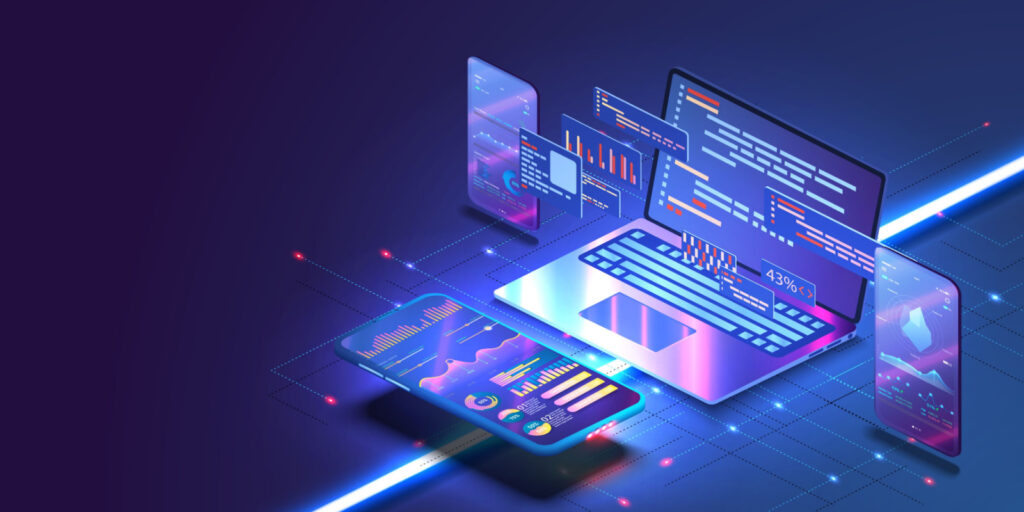Artificial intelligence (AI) has transformed several industries in recent years, and the development of mobile apps is no exception. The introduction of AI technologies into mobile apps has completely changed the way we use our smartphones and created a myriad of new opportunities. In this article, we’ll examine the substantial influence of AI on the creation of mobile apps, as well as its advantages and the fascinating options it offers both users and developers.

Personalization and User Experience are Boosted
The way applications interact with users has been completely transformed by artificial intelligence (AI), especially in terms of personalization and user experience. Applications may analyze enormous volumes of data and offer individualized experiences that cater to user preferences and needs by utilizing AI algorithms and approaches. Through data collection and analysis, AI-powered personalization algorithms allow applications to comprehend user behavior, preferences, and trends. Delivering extremely relevant and targeted material, recommendations, and suggestions is possible using this data. For instance, using a user’s preferences and surfing history, AI may tailor news feeds, product recommendations, and social media content. AI is essential for improving user experience, as well. Applications can comprehend and interpret human language using Natural Language Processing (NLP) algorithms, which enable speech recognition, voice commands, and sentiment analysis. Applications become more user-friendly as a result of the easy-to-use interactions made possible by this. AI can also improve user experience by using computer vision technology. Applications can read and analyze visual data using picture and object recognition algorithms, enabling functions like facial recognition, augmented reality, and image-based search. Through the provision of interactive and aesthetically pleasing features, these capabilities improve the user experience. Although AI greatly improves personalization and the user experience, it also raises questions about data security and privacy. To safeguard user information and ensure ethical AI use, appropriate protections must be put in place.
Autonomous Voice Assistants
The creation of intelligent voice assistants depends heavily on artificial intelligence (AI). These digital helpers, including Siri, Google Assistant, and Alexa, rely on AI-powered voice recognition and natural language processing. Voice assistants can comprehend user requests, commands, and natural language input thanks to AI. Voice assistants continuously learn from user interactions to enhance their responses using machine learning techniques. They may use voice commands to carry out operations, respond to inquiries, and manage app features, making app interactions more convenient and hands-free. Intelligent voice assistants have applications outside of just mobile apps, including home automation, healthcare, and navigation. They provide individualized assistance and support, enabling users to work with apps and gadgets in a more natural and effective way. The use of voice assistants that incorporate AI has completely changed how we engage with mobile apps and other devices by improving their usability, accessibility, and capacity to comprehend and respond to natural language inputs.
Image and Video Processing Technology
Mobile apps now have much more visual identification, analysis, and manipulation abilities thanks to AI-based image and video processing algorithms. With the help of facial recognition technology, image recognition algorithms can recognize objects, faces, and scenes, enabling apps to offer augmented reality experiences, enhance security, and aid in image-based searches. On the other hand, video processing algorithms can provide deep false detection, object tracking, and real-time video editing, expanding the potential for innovative and engaging mobile apps.
Chatbots and Intelligent Automation
Applications now frequently use chatbots and virtual assistants that are powered by AI. These sophisticated programs can comprehend user inquiries and respond accordingly, offering tailored help and support. They gain knowledge from user interactions, which enables them to continuously enhance their responses and better comprehend consumers’ demands. Chatbot and AI-powered automation features are widely included in mobile apps to speed up workflows and improve user assistance. AI-powered automation features can speed up time-consuming operations for app users by automating data entry and content creation. Natural language processing and machine learning-powered chatbots can provide immediate customer service, respond to inquiries, and walk users through app capabilities. These clever bots are accessible around-the-clock, ensuring rapid help and raising user satisfaction levels.
Insights and Predictive Analytics
Predictive analytics is another area where AI shines. AI algorithms can forecast user behavior by examining historical data and patterns, allowing applications to proactively give customized information or offers. To increase the possibility of conversion, an e-commerce app, for instance, can suggest products based on a user’s browsing history and purchasing tendencies. With the help of AI, mobile apps can leverage the potential of predictive analytics, giving developers and companies access to insightful user data. Massive amounts of data can be analyzed by machine learning algorithms to spot patterns, trends, and correlations, assisting app developers in making informed decisions and enhancing app performance. Using predictive analytics, marketing strategies may be improved, user acquisition can be improved, and user retention can be improved.
Wrapping Up
In conclusion, personalization and user experience in application development have been significantly impacted by AI. Applications may now give more personalized and interesting experiences thanks to AI, which also powers clever virtual assistants and personalized recommendations. We may anticipate increasingly more sophisticated and natural interactions that improve user engagement and pleasure as AI develops. The industry has undergone a radical change as a result of the incorporation of AI technologies. AI has completely changed how we interact with mobile applications, from tailored user experiences and intelligent voice assistants to enhanced picture processing and predictive analytics. As AI develops, developers now have a wide range of resources at their disposal to make cutting-edge, intelligent mobile apps that respond to customers’ wants and tastes. The future of mobile app development is surely exciting and full of possibilities given the endless possibilities that AI offers.
Tags: AI, app development, Mobile app, mobile app development

